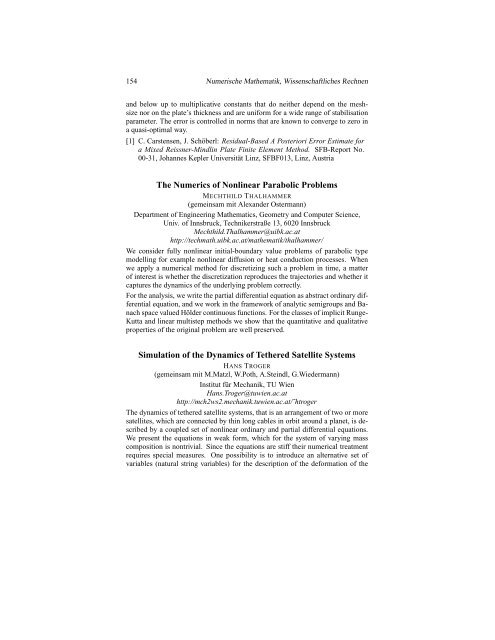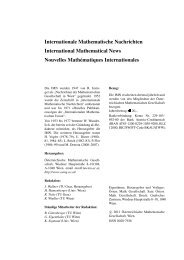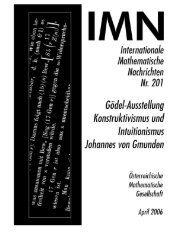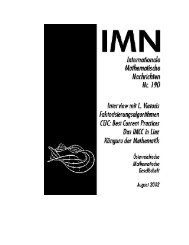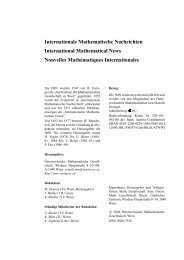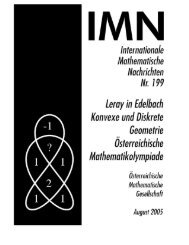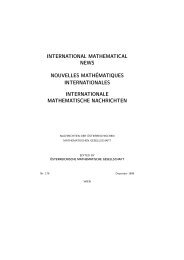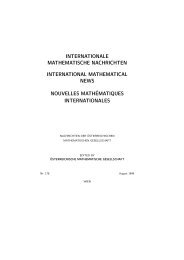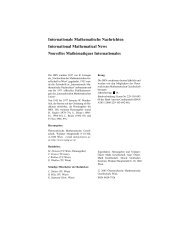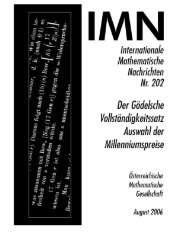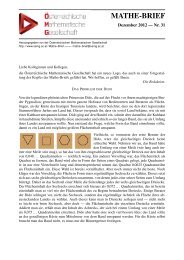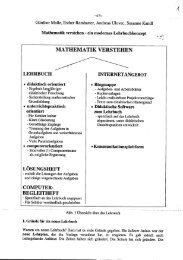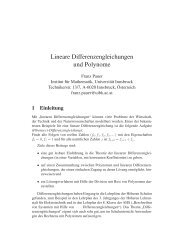Redaktion: K. Sigmund, G. Greschonig (Univ. Wien, Strudlhofgasse ...
Redaktion: K. Sigmund, G. Greschonig (Univ. Wien, Strudlhofgasse ...
Redaktion: K. Sigmund, G. Greschonig (Univ. Wien, Strudlhofgasse ...
Sie wollen auch ein ePaper? Erhöhen Sie die Reichweite Ihrer Titel.
YUMPU macht aus Druck-PDFs automatisch weboptimierte ePaper, die Google liebt.
154 Numerische Mathematik, Wissenschaftliches Rechnen<br />
and below up to multiplicative constants that do neither depend on the meshsize<br />
nor on the plate’s thickness and are uniform for a wide range of stabilisation<br />
parameter. The error is controlled in norms that are known to converge to zero in<br />
a quasi-optimal way.<br />
[1] C. Carstensen, J. Schöberl: Residual-Based A Posteriori Error Estimate for<br />
a Mixed Reissner-Mindlin Plate Finite Element Method. SFB-Report No.<br />
00-31, Johannes Kepler <strong>Univ</strong>ersität Linz, SFBF013, Linz, Austria<br />
The Numerics of Nonlinear Parabolic Problems<br />
MECHTHILD THALHAMMER<br />
(gemeinsam mit Alexander Ostermann)<br />
Department of Engineering Mathematics, Geometry and Computer Science,<br />
<strong>Univ</strong>. of Innsbruck, Technikerstraße 13, 6020 Innsbruck<br />
Mechthild.Thalhammer@uibk.ac.at<br />
http://techmath.uibk.ac.at/mathematik/thalhammer/<br />
We consider fully nonlinear initial-boundary value problems of parabolic type<br />
modelling for example nonlinear diffusion or heat conduction processes. When<br />
we apply a numerical method for discretizing such a problem in time, a matter<br />
of interest is whether the discretization reproduces the trajectories and whether it<br />
captures the dynamics of the underlying problem correctly.<br />
For the analysis, we write the partial differential equation as abstract ordinary differential<br />
equation, and we work in the framework of analytic semigroups and Banach<br />
space valued Hölder continuous functions. For the classes of implicit Runge-<br />
Kutta and linear multistep methods we show that the quantitative and qualitative<br />
properties of the original problem are well preserved.<br />
Simulation of the Dynamics of Tethered Satellite Systems<br />
HANS TROGER<br />
(gemeinsam mit M.Matzl, W.Poth, A.Steindl, G.Wiedermann)<br />
Institut für Mechanik, TU <strong>Wien</strong><br />
Hans.Troger@tuwien.ac.at<br />
http://mch2ws2.mechanik.tuwien.ac.at/˜htroger<br />
The dynamics of tethered satellite systems, that is an arrangement of two or more<br />
satellites, which are connected by thin long cables in orbit around a planet, is described<br />
by a coupled set of nonlinear ordinary and partial differential equations.<br />
We present the equations in weak form, which for the system of varying mass<br />
composition is nontrivial. Since the equations are stiff their numerical treatment<br />
requires special measures. One possibility is to introduce an alternative set of<br />
variables (natural string variables) for the description of the deformation of the


